Baking Bread? Discover the Couronne Shaping Method!
Ahhh, what is the “couronne” you ask? It’s French for “crown.” The couronne technique originated in the Bordeaux region of France. Traditionally this ring-shaped loaf is composed of six to eight balls of whole grain bread dough, blanketed by another flat disk of dough that holds the loaf together.
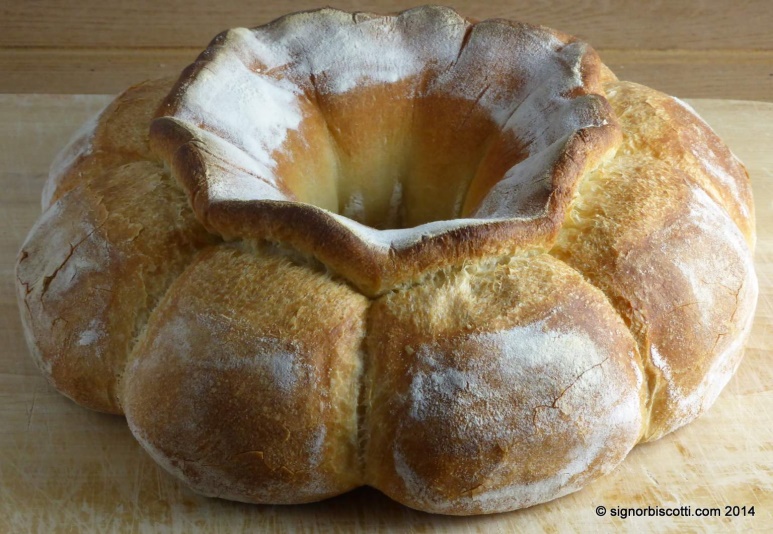
By process of this clever design, as the couronne bakes, the disk of dough rises away from the balls, making it seem as though the loaf was expertly scored rather than simply shaped.
Though the technique may seem complex, a few simple photos and instructions will have you well on your way to couronne success.
For those of you who are new to bread shaping or are daunted by the thought of stepping outside the bounds of an 8 1/2″ x 4 1/2″ loaf pan, don’t hesitate to give it a try. I’ll openly admit this technique is a little time-consuming and takes some practice, but once you get it down, it’s fun and will make you look like a bread-baking pro.
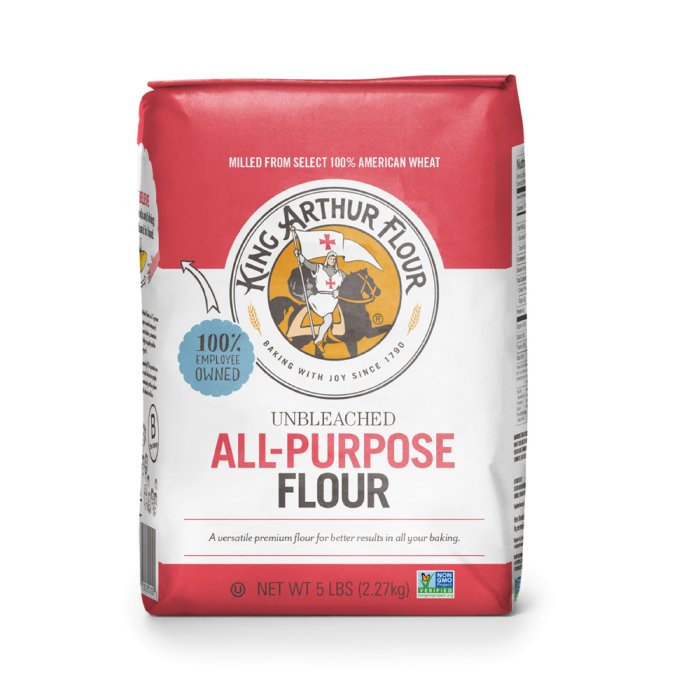
You’ll want a recipe developed especially for this look, and King Arthur Flour has one, their “No-Knead Multigrain Crown” recipe. Reviewers all say they really like the nutty wholesomeness of this loaf, however just about any lean (no added fat) bread dough recipe will work.
Starting the night before you’d like to bake bread, prepare your dough. You’ll want to combine the following ingredients in a large, 6-quart mixing bowl, or a large, similar capacity dough-rising bucket. I thank King Arthur Flour for sharing this inspiring article on a clever way to work with bread dough!
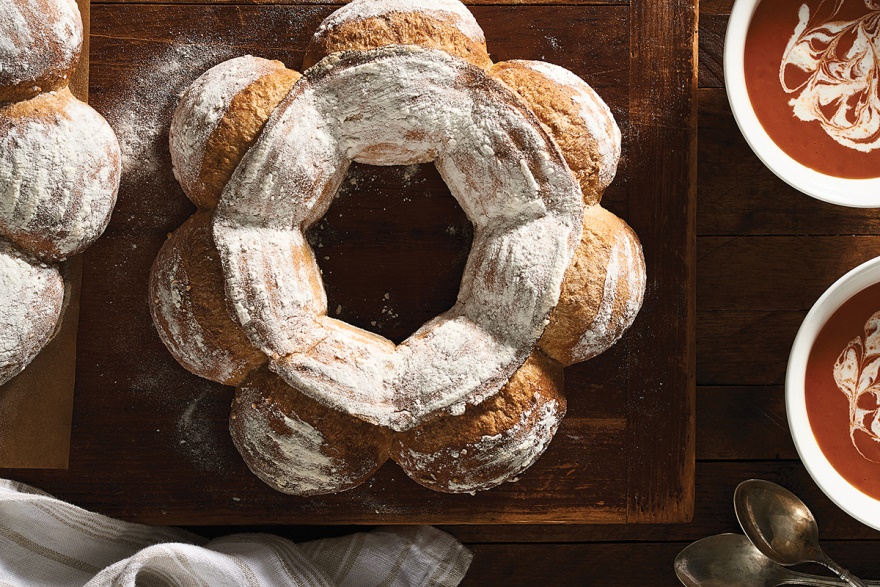
NO-KNEAD MULTI-GRAIN CROWN (Couronne)
3 3/4 cups whole grain flour
4 cups unbleached all-purpose flour
1 tablespoon salt
1 1/2 tablespoons instant yeast
3 cups lukewarm water
3 tablespoons raw honey
Mix and stir everything together to make a very sticky, rough dough. If you have a stand mixer, beat at medium speed with the paddle attachment for 30 to 60 seconds. If you don’t have a mixer, just stir with a big spoon or dough whisk until everything is combined.
Cover the bowl or bucket and transfer to the refrigerator to rest overnight, or for up to three days.
DIVIDING the DOUGH
When you’re ready to make bread, generously flour a 10” to 12” ringed brotform. (See explanation below.)
Grease your hands and pull off about one-third of the dough (about 510g to 567g if you have a scale). You’ll have the opportunity to make 3 loaves out of this one batch of dough.
Place the dough onto a floured work surface, divide it into eight equal pieces, and shape each piece into a ball. Set aside seven of the balls smooth-side down (upside down). This is a good reminder that you’ll be placing the balls upside down in the brotform later.
Roll the 8th ball into a thin disk roughly 8″ in diameter.
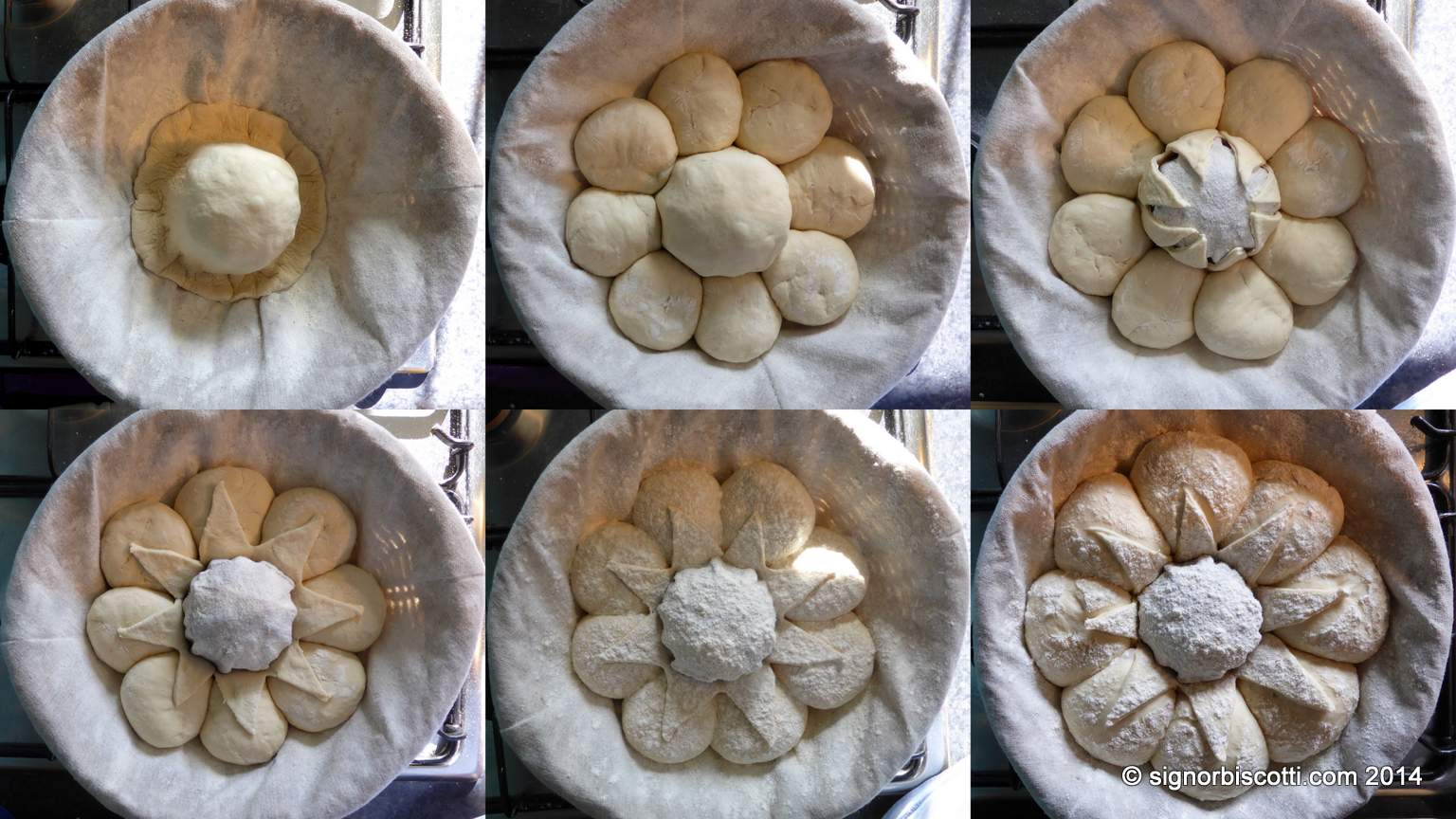
SHAPE THE COURONNE
With all the pieces of our couronne laid out, it’s time to shape. Brush a thin coat of oil around the perimeter of the dough disk. The separation of the disk from the balls is what creates that lovely crested ring (or “ear”) around the top of the finished loaf. The oil will prevent the balls of dough from sticking to the disk.
Next, carefully drape the disk, oiled side up, over the center hump of your mold; it should cover about 1” beyond the base of the brotform’s center hump.
Again, your brotform should be generously dusted with flour here. If not, the dough will stick to it when you try to turn it out of the mold.
Now it’s time to add the dough balls. Space them evenly around the center hump, partially on top of the dough disk, smooth side down. The balls will barely touch, and the middle of the top of each ball will fall about even with the perimeter of the disk.
The final piece of shaping involves a little cutting (no slashing). Using a paring knife, cut from the center of the dough disk down to each point between two balls of dough. Wrap each triangular section of dough over its corresponding ball of dough to form a star-like pattern.
Let the dough rise. That’s it. You’re done with the shaping!
Now cover the dough and let it rest until it’s a little puffy and no longer cool to the touch. Like most no-knead dough, this one doesn’t do a lot of rising. You’re mostly looking for a relaxed, non-springy reaction when you lightly press on one of the balls with your finger.
This 60 to 90 minute rest offers the perfect window to start preheating your oven. If you’re using a baking stone – which is recommended for an extra crispy crust – place it in the middle of the oven. Then, place a shallow metal or cast iron pan (not glass, Pyrex, or ceramic) on the lowest oven rack. You’ll add hot water to the pan when the bread goes into the oven, again, for an extra crisp, crackly, bakery-style crust.
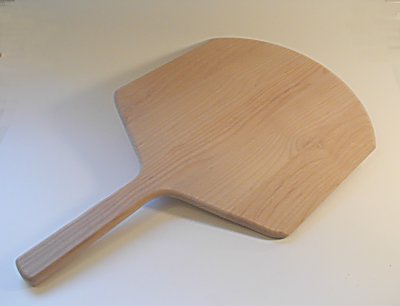
TURN OUT THE DOUGH
The easiest way to do the turn-out is with parchment paper. Simply lay the parchment over the loaf. It will be the easy-to-maneuver vehicle by which your sticky dough will make it to the hot oven.
Your next move, if using a stone (in the oven, preheated), is to pick your transferring weapon. An upside-down sheet pan works (if you don’t have a baking or pizza peel). This helps you get the loaf to the oven without burning yourself. Center the peel or bottom side of the pan over the parchment-covered loaf. With one hand under the brotform and the other in the middle of the peel or pan, swiftly flip all parts at once. Your hands will have switched positions.
Place the peel or pan back on the work surface and gently remove the brotform to reveal the loaf. Ta da! (You can use this same method if you’re baking on a pan. Center it top side down over the parchment covered loaf and follow the flipping instructions above.)
BAKE
Have about a cup of hot water at the ready before you open the oven.
Quickly transfer the loaf to the oven on parchment onto the hot stone, if you’re using one, or simply onto a middle rack, if it’s on a pan.
Carefully pour the hot water into the hot pan at the bottom of the oven; it’ll bubble and steam. Immediately shut the oven door to prevent the steam from escaping.
Bake the couronne for 15 to 20 minutes, until it’s a deep, golden brown and the internal temperature is at least 190°F on a digital thermometer.
Remove the loaf from the oven and transfer it to a rack to cool.
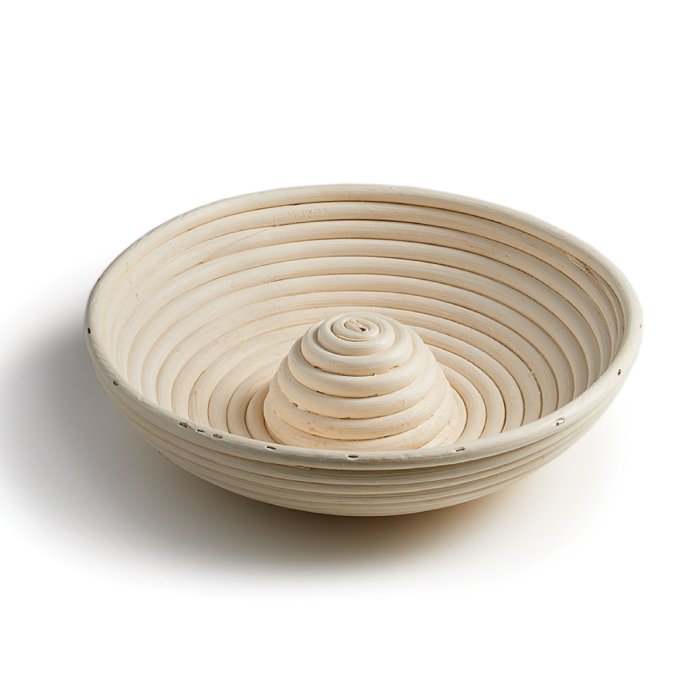
Finally, what’s a “brotform?” It’s a traditional coiled cane rising and shaping basket. (King Arthur Flour sells one that is made of coiled willow reeds and has a traditional beehive shape.) When dough is risen, you turn it out onto a pan or baking stone to bake. The loaf sports a gorgeous pattern of floury rings circling the deep-golden crust.
As I was reading the comments and reviews on this basket, I noticed several bakers saying they struggled with their dough not being released when they upturned the basket. Everything stuck. So Rebecca King, master baker from Crown Jewel Cakes, Kennett Square, PA gave this problem-solving suggestion:
“I had been trying to make round bread without the form with poor results - the bread tasted great but was too flat. The form has solved that problem.
“I too, struggled at first to find a method for getting the bread out of the form and onto the baking stone without damage to the dough. After various experiments, I found the following works best: 1) Cut a piece of parchment paper that is a few inches in diameter larger than the opening of the brotform 2) With the dough still in the brotform, lay the parchment over the brotform 3) Place the peel over top of the parchment 4) Using both hands to hold the peel/parchment firmly to the brotform, quickly flip the brotform over 5) Gently pull the brotform/liner straight up and off of the dough 6) Use the peel to slide the bread onto the hot baking stone - if it sticks, you have a few inches of parchment that you can gently pull to help the bread get off of the peel and onto the stone.”
- www.kingarthurflour.com
- www.signoribiscotti.wordpress.com
- www.armchair.com
 Alice Osborne
Alice Osborne
Weekly Newsletter Contributor since 2006
Email the author! alice@dvo.com
